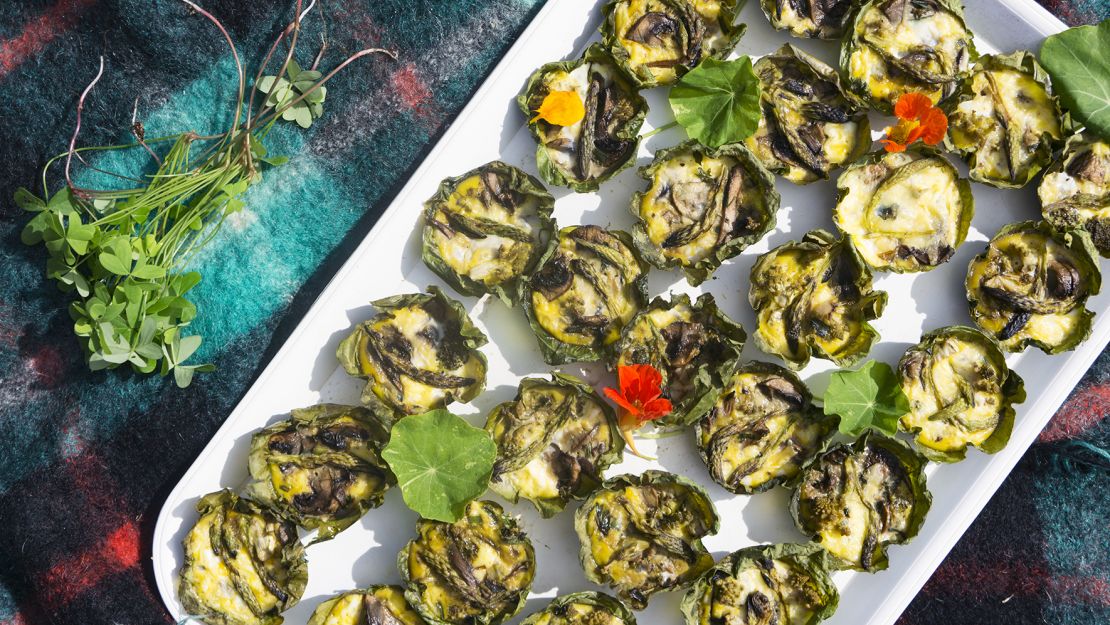Roushanna Gray grew up on the wild side.
As a teenager, Gray would collect mushrooms with her family in Cape Town, South Africa, and after moving to the coast 14 years ago, she fully embraced wild foraging.
Gray planted her own tea garden and started experimenting with wild flavors, adding edible flowers and herbs to iced teas and cakes.
She became a personal wild food chef, foraging daily for ingredients like veldkool (a wild vegetable similar to asparagus) and mussels down the coast in the summer.
Related: Meet the culinary creatives shaking up African food
“I believe that food that is picked as fresh as possible and as close to your location as possible is the best for you,” Gray says, “and if you think about wild foods, they tick all of those boxes.”
In the past few months, Gray has found an increased appetite for the wild food recipes she posts on Instagram.
Wild foraging is back in fashion with a growing number of wild food innovators in the area, though as Gray acknowledges, “the true foragers are not on any social media platforms – they’re the ones who are doing the work in the mountains and out in the wild.”
The “season of flavor”
Wild foods are considered to be anything not cultivated by humans and are usually indigenous, from edible weeds and flowers to seaweeds and shellfish. They’re sourced depending on the season.
There is no shortage of options in the Cape Floral Region – recognized by UNESCO as one of the most special places on Earth for plant biodiversity. More than 9,000 plant species grow in the surrounding vegetation.
“Foraging here supplied the staple diet for the Khoi people, one of the oldest original people on Earth,” according to Mark Heistein, CEO of Cape Winelands Biosphere Reserve.
Hundreds of these ingredients are also believed to have medicinal qualities, says Heistein, “like rooibos tea, considered a health tea, which is exported worldwide.”
Wild rosemary, confetti bush and wild sage are used to marinade chicken.
Samphire and kruipvygie – a wild green succulent – spice up salads, while the indigenous plant buchu is infused in brandy.
Since 2017, Gray has been sharing her love of the edible landscape with locals and tourists through seasonal workshops.
Right now it’s winter in Cape Town, which Gray calls the “season of flavor” as “everything comes alive in the rainfall area of the Western Cape.”
Gray runs the workshops through her company Veld and Sea in Cape Point, around 70 kilometers south of Cape Town, where the Atlantic and Indian oceans meet.

She estimates she has taught thousands of people how to forage.
In her coastal foraging classes before the pandemic, groups were taken down to local rock pools to gather their lunch ingredients from an array of edible seaweed species and shellfish, and then invited to create and share recipes.
When Covid-19 hit South Africa and the country entered lockdown at the end of March, Gray was unable to run her group workshops in person; although certain restrictions are easing, she continues to find a growing fanbase online.
Veld and Sea has run 10 online workshops for groups of up to 22 people during lockdown, suggesting playlists and drink recipes to accompany the sessions.
“It’s very ironic to be able to create this connection for people to nature through a screen,” Gray says. “I definitely think there’s a shift in people’s perceptions to nature during this time, to being outside, and the connection between our plates and our landscapes.”
For more stories like this, visit Inside Africa.












